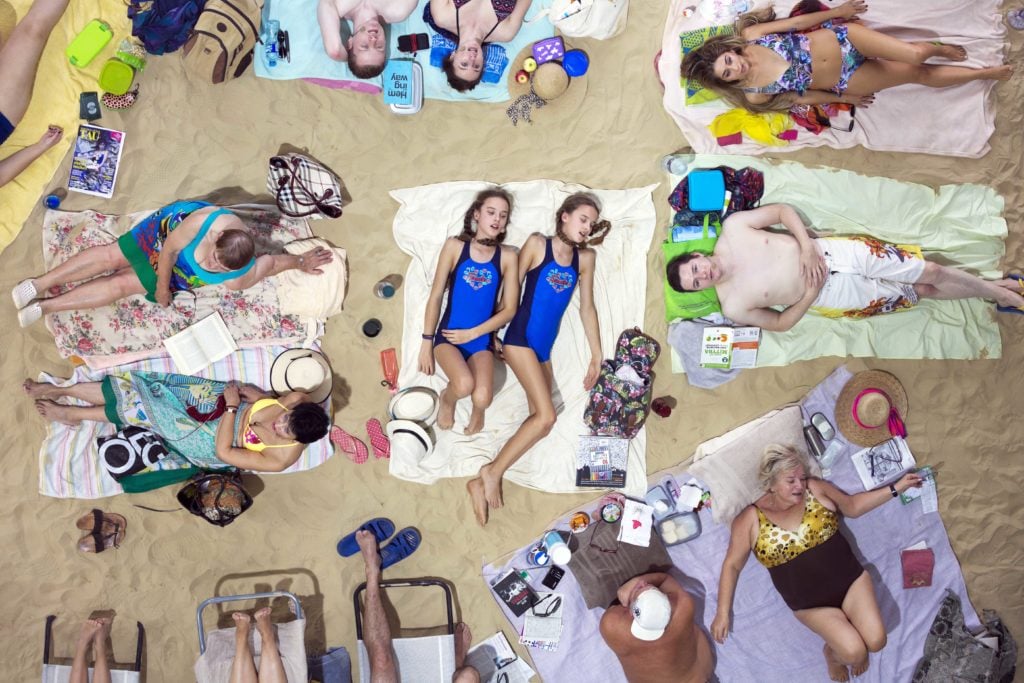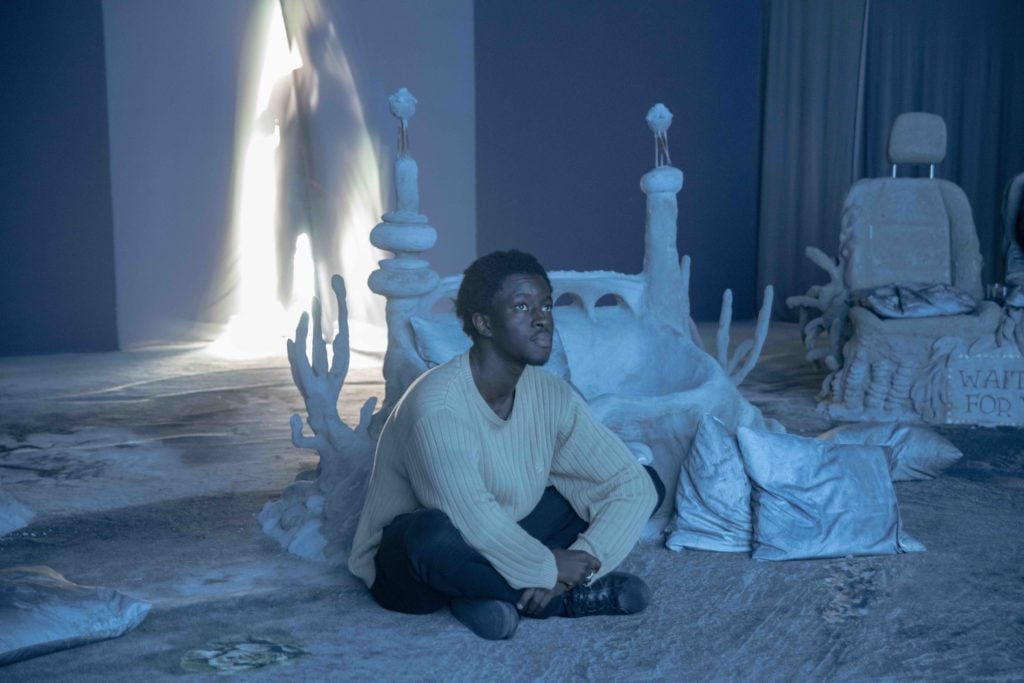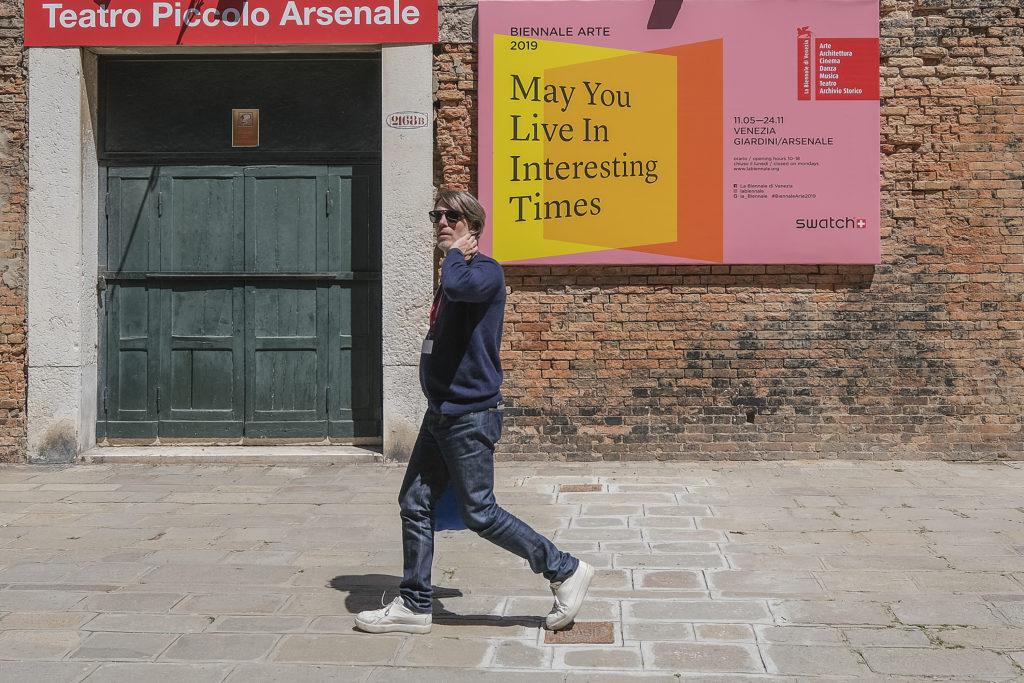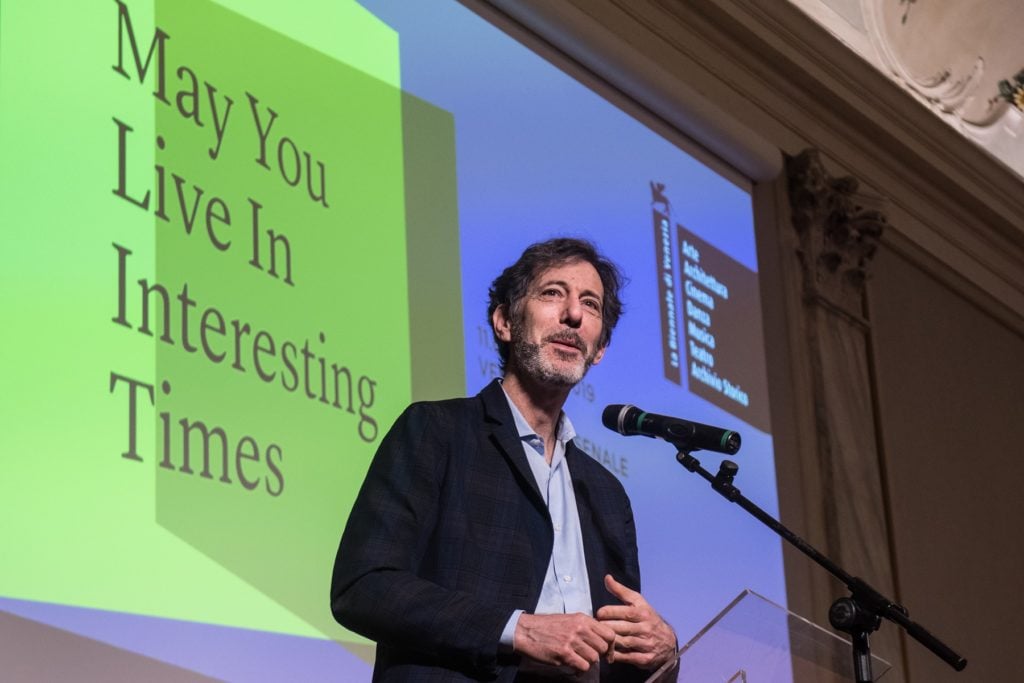Every Monday morning, artnet News brings you The Gray Market. The column decodes important stories from the previous week—and offers unparalleled insight into the inner workings of the art industry in the process.
This week, bringing the art world’s highest-profile exhibition back down to earth…
PULLING THEMSELVES UP
On Tuesday, my colleague Julia Halperin reported on the extraordinary measures that artists, curators, and other interested parties from little-recognized countries have taken to bootstrap their way to an official spot in this year’s Venice Biennale. By talking with those involved in producing the national pavilions of Malaysia, the Ivory Coast, Kosovo, and Grenada, she highlights the sacrifices and ingenuity required to participate in the star-studded international exhibition. But at the same time, her reporting also reveals one way in which even this renowned event is just one more high-stakes dice roll.
For the uninitiated, the just-opened 2019 Venice Biennale brings together artists from around the world and across disciplines to form a city-spanning, triple-threat cultural spectacular that runs through November 24. Alongside an international exhibition composed by Biennale curator Ralph Rugoff, as well as a series of official “collateral events” that received his blessing, the Biennale’s third pillar is a series of national pavilions in which countries exhibit a project by a curator and artist(s) specifically representing their heritage and contemporary artistic achievements.

Sun & Sea, Lithuania’s contribution to the 2019 Venice Biennale. Photo: Neon Realism.
Rugoff’s Biennale features around 90 national pavilions, the most in the event’s 58 editions. But while the government of each participating country must officially sponsor its pavilion as a part of the application process, the definition of “sponsorship” can vary widely. As a general rule, the smaller the nation, the less support officials tend to be able to provide to the curators and artists they have selected to represent them.
This is a major consideration, since the organizers behind the pavilions are responsible for many, if not most, of the costs and requirements of realizing them. Halperin sums up the dilemma nicely:
The Venice Biennale is not only the art world’s most prestigious international art exhibition, it is also one of the most demanding. Countries from across the globe must rapidly raise money, ship art to a tiny island, secure a space (which might be hundreds of years old and ill equipped to present cutting-edge work), and staff it for the entire six months of the biennale—all while making sure they are putting their best foot forward on the international stage.
The challenge is greatly reduced for curators and artists with sterling art-world credentials and wealthy countries behind them, especially since those wealthy countries tend to contain wealthy galleries and wealthy patrons willing to help cover the costs. They also are more likely to have spent money to build a custom space in one of the Biennale’s main sites, the Arsenale and the Giardini, before they became full. Smaller countries’ representatives, meanwhile, often have to scramble to find available space off-site and generally navigate much choppier financial waters. Even the most cost-conscious among them can risk capsizing.
According to Halperin, the Ivory Coast’s representatives pegged the all-in financial burden of their national pavilion at $110,000, while their counterparts in Kosovo put the figure at $300,000. For reference, the average monthly wage in Kosovo in December 2018 was about €504 (about $566 by today’s exchange rate), according to Trading Economics. In light of that fact, using the term “bootstrapping” may be an understatement. Before they can even hoist themselves up by those proverbial handholds, they’ve got to cobble together the boot in the first place.

Laure Prouvost, “Deep See Blue Surrounding You / Vois Ce Bleu Profond Te Fondre,” French Pavilion at the 58th Venice Biennale, 2019. © Giacomo Cosua.
SAINT ELSEWHERE
This harsher financial and logistical reality forces Biennale artists from small countries to both manage their ambitions and shoulder a level of risk their more fortunate peers from elsewhere don’t have to. For example, Amy Cannestra, one of the artists in Grenada’s pavilion, began the Biennale process with an ambitious proposal featuring a self-driving robot. However, the financial realities of the situation quickly forced her to cut from fat to bone. As she said:
“From that point, every decision about technology, material, sizes, etc., I had to ask myself, how much debt am I willing to take on for an opportunity of this caliber?”
There are two very different ways that we could read Cannestra’s situation. One would be to toast her and her scrappy peers for dancing across the dagger blade of precarity all the way to one of the most prestigious art exhibitions in the world. Great creative achievements demand great sacrifice, we tell ourselves, and chancing (yet narrowly avoiding) financial ruin is just what you have to do in this field if you’re operating outside the golden dome of privilege. Cannestra and company played the game, and played it well enough to win this round—and for that, they should be celebrated.
The other way to look at this scenario is to recognize that the choices Cannestra and her peers faced in this elevated context were just a high-visibility variant of the choices artists around the world face every day in somewhat-to-significantly less esteemed contexts—and that this is a hugely troubling element of both the art economy and the wider economy.

The Venice Biennale exhibition “May you live in interesting times,” will be open to the public from May 11 to November 24, 2019. Photo by Awakening/Getty Images.
For instance, many, if not most, profile-boosting opportunities for artists at museums—a designation that includes everything from solo exhibitions to small projects to lectures—pay little or nothing. Should artists dip into their savings (if they have savings) or take on debt to do them anyway, even when the payoff will be dramatically lower than it would be for participating in the Venice Biennale? If so, how many times can they make this sacrifice before the costs become unsustainable?
Let’s consider another scenario. In December 2014, the Atlantic found that average annual tuition at what the magazine deemed “the 10 most influential” MFA programs came in at about $38,000, meaning that the two years required to complete the art world’s favorite advanced degree could rise to the neighborhood of $100,000 once room and board, supplies, and other expenses were factored in. Should artists shoulder tens of thousands of dollars in student loans to pursue one, in hopes that the pain will be worth absorbing over the long term? (Probably not, if you look at the data for either ultimate career impact or straight-up employment.)
And in an even less glamorous circumstance, real-estate costs in art hubs large and small continue climbing with all the speed of a chimp trying to escape a ground-bound predator. Between 2000 and 2012 alone, rent increased an average of 23 percent in 10 traditionally artist-friendly New York neighborhoods. Even in Berlin, long portrayed as an economic safe haven for creative strivers, artists started protesting their dwindling studio and housing options years ago. All of which forces more and more of them around the world to choose between living beyond their means or staying within budget by renting, say, an ad-hoc space without heating or fire alarms—and just crossing their fingers that a brutal freeze or catastrophic blaze won’t hit at some point.
So when Cannestra asks herself how much debt she’s willing to take on for the opportunity to exhibit in Grenada’s national pavilion, the operative question is far closer to universal in the artist community than it might seem on the surface. This is not a matter of a niche talent facing a one-time dilemma in an extraordinary circumstance. It’s just a particularly consequential example of the fiscal gambles she and her peers around the world have to continuously take (or not), in matters large and small alike, in hopes of advancing their careers to a semblance of security someday.
And in this high-stakes sense, all working artists today are a lot closer to showing in a Venice Biennale pavilion than they probably realize.
[artnet News]
That’s all for this week. ‘Til next time, remember: Even the most stunning spectacles are supported by someone’s precarity.










